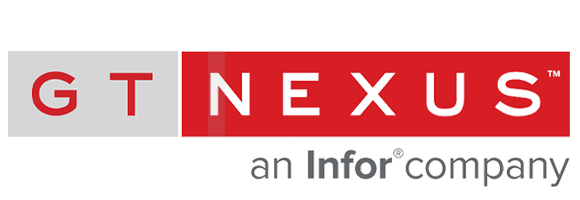It’s Time for Supply Chains to Adapt or Die

Adapt or die. That message, or some version of it – was scattered throughout the conversations and keynotes that made up CSCMP’s Annual Conference this September in Kissimmee, Fla.
The rate at which new competition and technologies are introduced has accelerated over the past 10 years.
Disruption happens on a daily basis. And customers expect newer, fresher products faster than ever.
Companies can no longer expect to do business as usual and survive.
There is no such thing as business as usual. Unless, of course, that business is rooted in constant change.
As it applies to supply chain practitioners, the core constituency of CSCMP’s membership, all this change has put them on a treadmill of sorts.
Everyone’s racing to keep up and the results don’t always feel like progress. And not every supply chain in good enough shape to keep up.
And so a few consistent themes emerged during what’s billed as one of the biggest supply chain conferences around.
Presentations tended to focus on some variation of the topics of leadership, technology and risk management.
All framed within the context that change is all around us, and that it’s the supply chain’s job to shape their companies into disruptive forces in an age of constant disruption.
We Are Living in a Digital World
The idea of digital transformation is less and less a thing of science fiction among old school supply chain types, and more acknowledged as a reality of the present day.
Still many companies haven’t yet figured out how to connect the physical supply chain to the digital one. And talking about those efforts – or asking questions about how it works – was all the rage at this year’s CSCMP.
One company that isn’t shy about its own digital transformation is GE. Seth Bodnar, Chief Digital Officer at GE, pitched his company’s significant progress toward the future.
“Almost a century and a half ago, Thomas Edison’s startup was fueling the industrial revolution that would improve billions of peoples’ lives,” Bodnar said. “And today the software revolution is meeting the industrial revolution. And that same company, we’re moving from sledgehammers to digits. We’re building the world’s premiere digital industrial company. So this is the future of our company. This is the future of our customers’ companies. And this is once again going to transform billions of peoples’ lives.”
Beyond GE’s efforts to marry industry and software, other discussions throughout the conference focused on these new technologies and how they’d be applied to any number of industries. Examples included Johnson & Johnson’s efforts to improve traceability in the drug supply chain, and Nike’s efforts to introduce 3D printing and automated technologies into the products made by the global athletic brand.
“The digital supply chain becomes equally as important as the physical supply chain in track and trace,” said Mike Rose, vice president, supply chain visibility at Johnson & Johnson.
These digital technologies, which also include robotics, the Internet of Things, and advanced analytics, make up a digital supply chain revolution that 75% of executives consider to be important to their businesses. However, as evidenced by conversations at CSCMP, not everyone is satisfied with their progress so far – and some don’t know where to begin.
Risk at Every Turn
Supply chain disruption is less a question of if something will happen, but when. The ability to keep the business running when something goes wrong is paramount to survival whether on this planet or off of it.
Capt. Scott Kelly, the astronaut best known for his record-setting stint of 365 days on the International Space Station, delivered a keynote addressing the themes of leadership and lessons learned in one of the riskiest careers around. He recounted an incident where one of the SpaceX rockets scheduled to deliver supplies to the ISS exploded shortly after liftoff.
As he describes, any launch is planned many years in advance, with long lead times needed for preparation. When one rocket explodes another isn’t ready to take off immediately after that. It’s a single point of failure. Therefore, Kelly and the crew of Russian cosmonauts aboard the space station at the time, were forced to make adjustments.
“NASA’s philosophy is to look for the things that you wouldn’t think of that maybe are so unlikely that would ever happen but would have very, very serious consequences,” Kelly said, “to try to protect yourself from every eventuality, but needing to look very closely for the things that are very unlikely but would have very significant consequences if they were to happen.”
While not every risk manifests itself in the form of a hurricane or fire or exploding rocket, the skill in risk management lies in preparation to keep going when everything seemingly goes wrong. Not every incursion is a black swan event. It’s the smaller, day-to-day incidents that can steadily chip away a company’s resilience, ultimately causing the most damage. Although the focus is often on the big stuff, it’s the understanding that risk presents itself in many ways – significant or mundane – and the preparedness to manage it, that keep supply chains running.
A Seat at the Table
Supply chain is still looking for a seat at the table, but it certainly isn’t for lack of trying. Although some 76% of companies operate without a chief supply chain officer acting as a voice in the C-suite, there are signs of growing recognition of the supply chain’s role in adding value.
Rick Jackson, former Executive Vice President of Logistics at Limited Brands, spent years evangelizing that SCM is the next big thing to revolutionize business. He recalls a story years ago of a CEO saying, “We don’t make our money in supply chain. We make it in selling goods at full price. Build me a supply chain that helps do that.”
The sentiment behind that statement was that the company’s business was retail – it was supply chain’s job to support it. But as Jackson pointed out, that narrow definition of supply chain drove the disconnect. It’s essential for the supply chain lead to communicate where and how value is being created.
It’s also essential to have a clear definition on value. What is value? What are you trying to achieve as an organization? And then map out how supply chain can execute towards those goals and values when it is integrated into operations with a seat at the C-level.
Even though the C-level supply chain exec remains uncommon among most organizations, it hasn’t prevented them from finding ways to elevate the role of supply chain within the company. Michelle Meyer, Director of Supply Chain Management at PWC, stressed the importance of considering what the business looks like organizationally and structurally. She describes a time at IBM when they began an organizational transformation focusing on supply chain.
The biggest shift at the beginning, both structurally and culturally, was the establishment of an SVP that didn’t own a brand. Up until that point, every senior vice president was responsible for a specific brand. The new role, SVP of supply chain, was a break from the mold. IBM ended up putting all procurement, customer service, demand planning and scheduling, distribution and manufacturing under that supply chain bucket.
It ended up with 22,000 people reporting into that Supply Chain organization. If you weren’t in sales, marketing, R&D or finance, you most likely were lumped into supply chain. It was important to clearly define the role and structure from the outset. The starting point was determining how the supply chain generates value. Meyer stressed the importance of spelling out to the CEO and CFO how an integrated supply chain contributes to the business. Not simply cost cutting but bringing value to the table.
Regardless of whether it’s risk management or the digitalization of supply chain, it is leadership that will drive companies forward and elevate the status of the supply chain in an increasingly competitive and fast-moving world.
But for widespread adoption to take place, it will require ongoing advocacy beyond the confines of an event like this, where most attendees are in the same line of work, and a better understanding of what technology brings to the table. Hearing these themes come to the forefront of a big supply chain conference like CSCMP is encouragement that many manufacturers and retailers are heading in the right direction.
Related: Executives Not Happy with Digital Supply Chain Transformation Efforts
Related White Papers
The Current and Future State of Digital Supply Chain Transformation
Executives see a large gap between the current state of digital transformation across their extended global value chains and what they expect to see in just five years from now. Download Now!
State of the Global Supply Chain
The State of the Global Supply Chain Report is an analysis of the top issues, challenges and opportunities faced by manufacturers and industry executives for 2016 and beyond. Download Now!
The Internet of Things Supply Chain
The biggest obstacle to being ready for the IoT is mindset - businesses need to think beyond their traditional roles in order to thrive when the IoT arrives in full force. Download Now!
Article Topics
GT Nexus News & Resources
The Current and Future State of Digital Supply Chain Transformation Infor Coleman AI Platform to ‘Rethink Supply Chain’ and Maximize Human Work Potential End-to-End Visibility: Handling the Demands of Retail Mastering Supply Chain Finance ERP Suppliers’ Changing Role New Logistics TMS Platform Sets Sights on SAP Amazon Selects Infor for Global Logistics Business More GT NexusLatest in Supply Chain
Microsoft Unveils New AI Innovations For Warehouses Let’s Spend Five Minutes Talking About ... Malaysia Baltimore Bridge Collapse: Impact on Freight Navigating TIm Cook Says Apple Plans to Increase Investments in Vietnam Amazon Logistics’ Growth Shakes Up Shipping Industry in 2023 Spotlight Startup: Cart.com is Reimagining Logistics Walmart and Swisslog Expand Partnership with New Texas Facility More Supply Chain



















